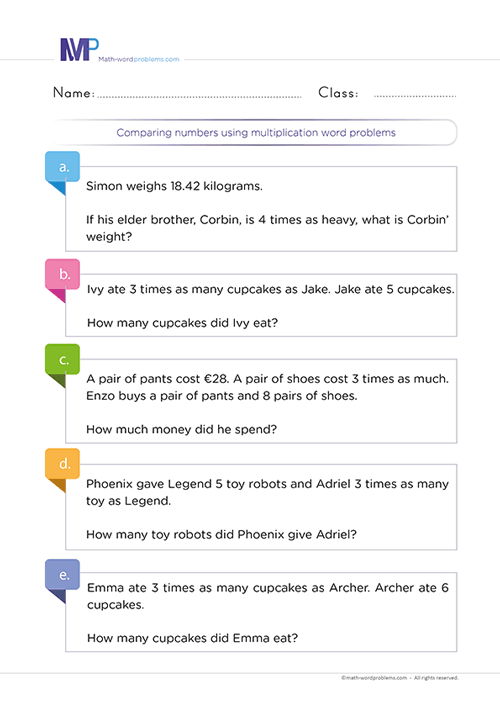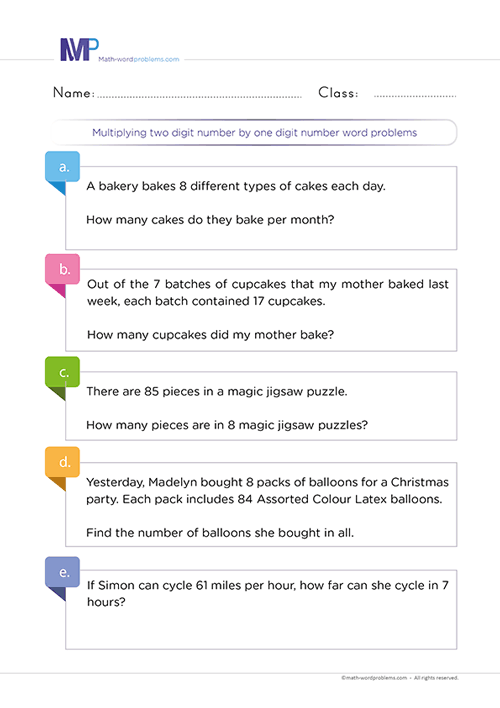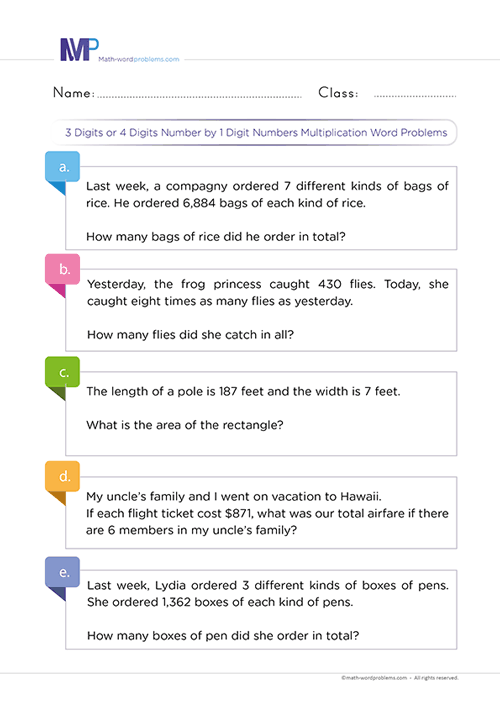 How to compare numbers using multiplication word problems
How to compare numbers using multiplication word problems
We are here to offer your fourth Graders basic skills and steps on how to compare numbers using multiplication word problems. Here, our several fun approaches and techniques will enhance kids' comparing numbers skills using multiplication problems.
As a matter of fact, once your kids engage in this resource, you'll be surprised at how they can effectively interpret both complex and straightforward comparing numbers problems.
Most importantly, we aim to equip learners with essential tips, techniques, and strategies to compare numbers using multiplication word problems with no difficulties.
Simple Steps to Compare Numbers Using Multiplication Word Problems
These unique and simple steps to compare numbers using multiplication word problems will provide your kids with the outstanding skills necessary to translate all complex comparing problems into solvable maths equations and consequently come out with an accurate answer.
To fully equip kids, we will provide some unique examples to show them how exquisite these steps work and for them to follow along, thus better understanding how to compare numbers using multiplication word problems.
Step 1: IDENTIFY THE PROBLEM
To identify the problem, carefully read the word problem very well to understand the picture that the problem wants you to handle. You can do this by trying to figure out the most important numbers and keywords in the word problem while reading it.
As we said earlier, if a word problem requires you to perform a multiplication operation,, especially when it involves comparing numbers using multiplication, you will find at least one of the following keywords in the word problem: - twice/thrice (as much as, as many as, as long as, as heavy as, as light as, as old as, as young as, …), 4, 5, 6, … times (as much as, as many as, as long as, as heavy as, as light as, as old as, as young as), etc.
One key Element for learners to understand is that they should not always rely on keywords alone. That is to say; the same keyword can have different meanings in different word problems.
For this reason, we reiterate on the importance of reading the question very carefully to understand the situation that the word problem is describing, then figure out exactly which operation to use***
Step 2: STRATEGIZE OR GATHER RELEVANT INFORMATION
Moving on to this step, you must ask yourself this vital question. “How will I tackle this problem?”
Also, remember that each word problem may require a particular format. So, the points below will enable you to solve any format a word problem may present.
- From the keyword(s) in the word problem, you will immediately know that you need to perform a Multiplication Operation.
- However, it would be best not to depend entirely on keywords. Instead, try to understand the situation that the problem is describing.
- Once you know the operation you will perform, create short sentences to represent the given word problem.
Step 3: SET UP AN EQUATION
With the knowledge you got from steps 1 and 2 above, you must write down a numerical equation representing the information in the word problem.
Step 4: PROVIDE A SOLUTION
From step 3 above, multiply the numbers using regrouping or other multiplication methods like long multiplication, grid multiplication, or lattice to determine the result. Always remember to include the unit of measurement in your final answer.
Step 5: CHECK YOUR WORK
Finally, check if your answer makes sense by estimating the final answer to see if it is close to what you expected. But, if the answer is not what you expected, go back to step one and start all over again.
Examples on how to compare multiplication word problems
Example One
Step 1:First, you must read the problem and pick out the keyword. You see that the keyword that you’ll find in the problem is “times.”
Step 2: Next, how will you tackle the problem? From step 1 above, the situation that the word problem describes and the keywords found in the word problem tell you that you must carry out a multiplication operation.
So now you need to construct short sentences representing the given word problem.
- George’s weight = 8.12kg
- Charles’ weight as compared to George’s weight = 4 times as heavy as George
- Therefore, Charles’ weight = George’s weight × Charles’ weight as compared to George’s weight
Step 3:Now, write down a numerical equation to represent the bolded sentence in step 2 above to solve this word problem:
8.12kg × 4 = ?
Step 4: From step 3 above, multiply the numbers using regrouping or any other multiplication methods like long multiplication, grid multiplication, and lattice method to determine the result. Always add the unit of measurement to your final answer.
Using the long multiplication method, we have
So, Charles’ weight is 32.48 kilograms.
Step 5: Finally, check if your answer makes sense by estimating the final answer to see if it is close to what you expected. But, if the answer is not what you expected, go back to step one and start all over again.
Example two
Step 1:Carefully read the word problem and then pick the keyword. You see that the keyword in the problem is “thrice as much.”
Step 2:Now, ask yourself, “How will I tackle the problem?” From step 1 above, the situation that the word problem describes and the keywords found in the word problem tell you that you must carry out a multiplication operation.
Now, form short sentences to represent the given word problem.
- Cost of the flat = $812,023
- Cost of another flat as compared to the main flat = thrice as much as the main flat
- Therefore, the cost of the other flat = the cost of a flat × the cost of another flat compared to the main flat.
Step 3:Write down a numerical equation to represent the bolded statement in step 2 above to solve this word problem:
$812,023 × 3 = ?
Step 4: From step 3 above, multiply the numbers using regrouping or other multiplication methods like long multiplication, grid multiplication, and lattice to determine the result. Always include the unit of measurement in your final answer.
Using the long multiplication method, we have
So, the cost of the other flat is $2,436,069
Step 5: Lastly, check if your answer makes sense by estimating the final answer to see if it is close to what you expected. But, if the answer is not what you expected, go back to step one and start all over again.






